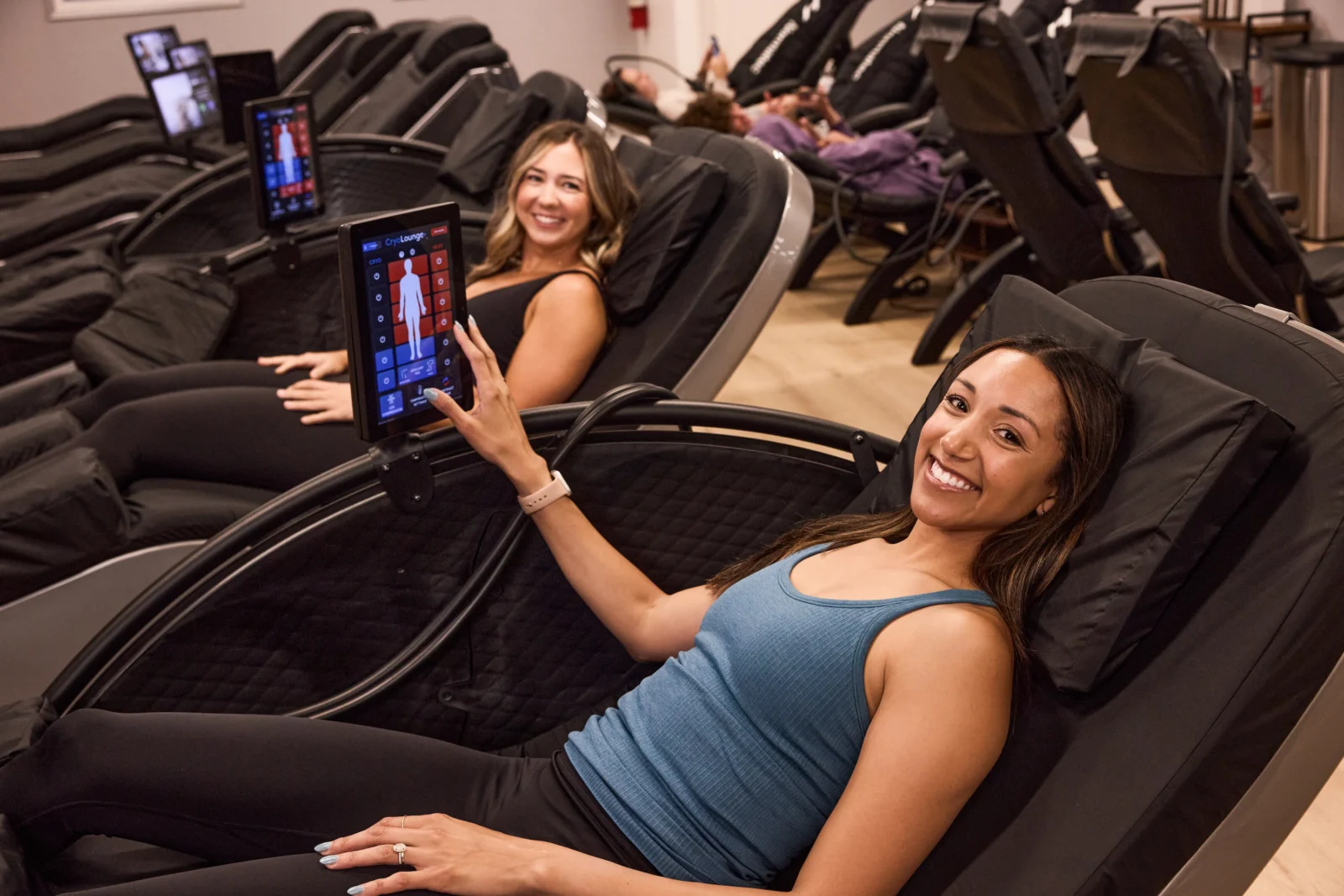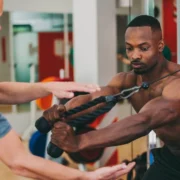Crafting Strategic Wellness Spaces Beyond the Workout
Partnership
Sponsored By WellnessSpace Brands

Gyms are now designing recovery spaces as intentionally as they do training areas
Within the fitness industry, the debate over recovery’s long-term relevance is over. That moment has passed. Today, fitness and wellness are not separate tracks – they’re two sides of the same coin. Nearly every forward-thinking gym has embraced recovery in some form, and the best are going far beyond simply checking the box.
What’s emerging now is a new wave of intentionality – where wellness is no longer a corner of the club, but a structured, strategic part of the facility’s design and its offering. Akin to the way clubs structure zones for strength, cardio and functional training, they’re now curating cold therapy sections, massage and percussion areas, infrared and red light therapy zones and mental recovery suites with the same precision and purpose.
It’s not a trend – it’s a redefinition.
And, at the center of this shift is WellnessSpace Brands – a company that’s been leading in recovery for decades and is now helping clubs imagine and execute a future-forward blueprint for holistic health.
“Fitness and wellness have become synonymous – fitness literally is wellness,” said the company’s President, Kevin Conaway. “It’s a whole-body approach – an overarching theme, and the fastest-growing gyms are investing thoughtfully and doubling down.”
The New Blueprint for Gym Design
One operator embracing this evolution is The Bay Club, a WellnessSpace Brands customer with a focus on holistic member experiences across its network of premium lifestyle clubs.
“We’ve seen a shift in how our members approach fitness at the Bay Club – recovery is no longer an afterthought; it’s an essential part of their routines,” said Tracy Cioffi, Chief Marketing Officer. “Our strategic recovery partner, Fitnessmith, brought to life our complimentary Recovery Spaces with tools like WellnessSpace Brands HydroMassage, CryoLounge+, percussion guns, and zero gravity chairs that are helping our members train, recover and recharge more effectively. These spaces have incredibly high usage … now the challenge is to continue to innovate in this space and keep it fresh.”
When it comes to design, Conaway says it starts with the same philosophy gyms have always applied to their training areas: variety and accessibility.
“When you walk into a strength area, it’s not just one machine and you’re done,” he explains. “There are a lot of ways to accomplish your fitness goals. The same applies to recovery. Members want options.”
He suggests thinking of recovery design in tiers:
Tier One includes broad-use modalities like HydroMassage chairs, percussion devices, and open stretching areas – tools anyone can engage with easily and intuitively. These services are often the most popular and widely used.
Tier Two involves more immersive options such as cold plunges, infrared saunas and CryoLounge – modalities that may appeal to a slightly narrower demographic but offer powerful results when used regularly.
Tier Three focuses on targeted solutions like red light therapy and mental wellness tools such as meditation pods and relaxation spaces – experiences that support long-term well-being and healthy lifestyles.
“Massage is always a great place to start because it’s accessible, it appeals to a broad base and it can be used before or after a workout – or even bring members in on their rest days,” Conaway said. “But the most successful clubs provide a variety across all three tiers.”
This variety is crucial, he says, to avoid one of the most common pitfalls: underwhelming members by offering too little.
“Clubs sometimes want to start with one solution to see how it goes, but members don’t want to be the only one doing something,” he says. “When you have four HydroMassage units and one is open, people are more inclined to walk up and sit in that one not in use. That visibility and availability drive usage.”
Another misstep? Hiding recovery areas behind closed doors. “For a long time, wellness meant putting massage chairs in a private room,” he says. “But we’ve seen time and again that clubs with open, visible wellness spaces experience much higher usage. Don’t bury recovery in the back corner or locker room.”
Beyond space planning, Conaway emphasizes aligning operations with club capacity. “When selecting recovery equipment, it has to work with the environment. A boutique studio might have the bandwidth for one-on-one assisted stretching, but a big-box club with 10,000 members clearly won’t. You need solutions that are scalable and self-directed.”
And finally, he suggests an obvious but often overlooked step. “Ask your members what they want,” he says. “The best designed wellness spaces could fall flat if the offering doesn’t align with your member’s needs.”
Smart Equipment Solutions
WellnessSpace Brand’s products are intentional in every way. Conaway says the company designs toward four core criteria: no staff required, ease of use, a 15-minute-or-less session, and the durability to withstand constant commercial use.
“We think about mass appeal, ease of integration and scalability in everything we build,” he says.
Those products are also science-backed. In a recent collaboration with Arizona State University’s Human Performance Lab, researchers studied the effects of WellnessSpace Brand’s HydroMassage and CryoLounge+ units. Participants who used the recovery tools after a high-intensity workout reported up to 32% to 52% reduction in fatigue or muscle soreness 24 hours later, compared to a control group.
“That kind of data helps us tell a better story about what recovery can really do for performance and well-being,” Conaway said.
And the company is just getting started. It’s preparing to launch two groundbreaking new products with more in the design pipeline.
The PolarWave Dry Plunge will offer a full-body cold plunge experience without water. Users stay fully clothed, making it more accessible and convenient, while the dry technology eliminates the need for plumbing or dedicated space.
The RedZone Sauna combines red light therapy with multiple types of infrared heat to help support healthy skin and general wellness.
“We’re paying close attention to where this category is heading,” Conaway said. “What we’re seeing is that clubs purposely designing for flexibility today are better prepared to meet evolving member needs tomorrow.”
That means designing wellness areas with space to grow – open, modular layouts that allow for plug-and-play additions as member interests evolve.
“Recovery is no longer an amenity. It’s a membership driver. And the more you can do to create visible, engaging and well-rounded wellness spaces, the more value you’re delivering to your members.”



